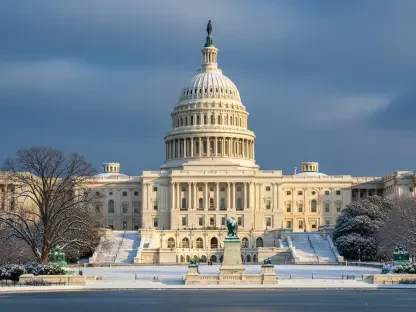Overview of Public Media Challenges and WFUV’s Struggle
In an era where public media serves as a cornerstone for community education and cultural diversity, a staggering financial blow threatens to undermine stations like WFUV, an NPR affiliate based at Fordham University in the Bronx, New York. With federal funding cuts slashing budgets across the sector, the very essence of public broadcasting—providing accessible, educational content to diverse audiences—is at risk. This crisis sets the stage for a deeper exploration into how one station battles to maintain its mission amid mounting challenges, reflecting a broader struggle within the industry.
The public media landscape has long been a vital source of independent journalism, arts programming, and educational outreach, often filling gaps left by commercial outlets. Stations like WFUV play a pivotal role, not only as local voices but also as training grounds for future media professionals. Yet, the sector’s reliance on federal support, channeled through entities like NPR and PBS, leaves it vulnerable to policy shifts, with recent legislative decisions exacerbating financial instability across the board.
This report delves into the specific plight of WFUV, examining the impact of a significant budget shortfall, the station’s response, and the broader implications for public media. As funding models evolve under pressure, understanding these dynamics offers insight into the sustainability of community-focused broadcasting. The challenges ahead are steep, but the resilience of stations like WFUV may hold the key to navigating this uncertain terrain.
The Landscape of Public Media and WFUV’s Role
Public media stands as a beacon of diverse, educational content, delivering programming that prioritizes community engagement over commercial profit. From in-depth news coverage to cultural showcases, the sector ensures that voices often sidelined by mainstream outlets are heard. Its importance lies in fostering informed citizens and preserving local narratives, a mission that has grown more critical in an age of information overload.
WFUV, nestled at Fordham University in the Bronx, holds a unique position as both a local NPR affiliate and a national influencer in the public radio sphere. Known for its eclectic music programming and commitment to emerging artists, the station reaches a wide audience while serving as an educational hub for students aspiring to careers in broadcasting. Its dual role amplifies its significance within the media landscape, bridging community service with academic growth.
However, the funding model sustaining public radio, heavily dependent on federal allocations through NPR and PBS, faces unprecedented strain. Recent policy shifts have reduced these resources, leaving stations like WFUV grappling with how to maintain operations. This financial uncertainty underscores a broader trend in public media, where budget constraints threaten to diminish the sector’s ability to serve as a public good.
Financial Impact of Federal Funding Cuts on WFUV
Scale and Scope of the Budget Shortfall
WFUV has been dealt a severe financial setback with the loss of $500,000 in federal funding, representing 7% of its nearly $7 million annual budget. Compounding this challenge are additional costs, such as music licensing fees previously covered by NPR, which could push the total deficit to $900,000. This shortfall poses a direct threat to the station’s ability to operate at full capacity.
The origins of these cuts trace back to a White House request, followed by U.S. Senate approval in recent months, to rescind $9 billion in previously allocated funds for public broadcasting and international aid. This decision reflects a larger trend of reduced federal commitment to media initiatives, leaving local stations to bear the brunt of the impact. For WFUV, the numbers translate into a pressing need for alternative revenue sources.
Immediate Operational Challenges
Day-to-day operations at WFUV are under significant strain due to the funding reduction, with potential cuts looming over programming and staff resources. Essential shows that highlight local talent or provide public affairs coverage may face reduced hours or elimination, diminishing the station’s reach. The ripple effect of such decisions could alter the quality and scope of content delivered to listeners.
Equally concerning is the risk to student opportunities, particularly the paid internships for up to 40 Fordham students who gain hands-on experience in broadcasting at WFUV. These positions are a lifeline for career development, offering practical skills in a competitive industry. A reduction in funding could limit these slots, directly impacting the next generation of media professionals and their access to real-world training.
Community and Educational Mission Under Threat
WFUV’s mission aligns closely with Fordham University’s Jesuit values, emphasizing intellectual growth, service, and justice through its programming and outreach. The station serves as a platform for dialogue and education, often addressing social issues and amplifying underrepresented perspectives. This commitment to community betterment is a core driver of its identity.
A key aspect of this mission involves promoting up-and-coming artists from underserved communities, providing them exposure they might not otherwise receive. Additionally, WFUV fosters connections with diverse listeners through curated content that resonates across cultural lines. Such initiatives strengthen community ties, making the station a vital local resource.
However, the funding cuts jeopardize these mission-driven efforts, potentially curtailing outreach programs and reducing the station’s ability to support emerging talent. The loss of resources could mean fewer events, less diverse programming, and a diminished presence in the community. This threat to WFUV’s foundational goals highlights the broader stakes of financial instability in public media.
Response and Resilience: WFUV’s Fundraising Efforts
In response to the financial shortfall, WFUV has launched an aggressive membership drive, raising $270,000 through one-time donations and monthly sustaining memberships. This initiative reflects a strategic pivot toward listener-supported funding, tapping into the loyalty of its audience base. The early success of this campaign signals a pathway to mitigate some of the immediate losses.
General Manager Chuck Singleton has expressed cautious optimism about the station’s stability, noting that closure is not an imminent concern. However, he acknowledges the cuts as a significant setback, requiring sustained effort to bridge the gap. His perspective underscores the delicate balance between maintaining current operations and planning for long-term viability.
Community support has emerged as a critical lifeline, exemplified by longtime listener Carol Frisch Villeneuve, who recently renewed her membership in solidarity with WFUV. Her action mirrors a wider trend of listener concern and willingness to contribute, as noted by station leadership. This groundswell of support illustrates the deep connection between WFUV and its audience, a bond that may prove essential in navigating the crisis.
Policy Context and Broader Implications for Public Media
The funding cuts to WFUV are rooted in federal policy changes, including an executive order issued by President Donald Trump to halt support for NPR and PBS, followed by legislative action to rescind billions in public broadcasting funds. These decisions have reshaped the financial landscape for stations nationwide, often with little regard for localized impact. The speed and scale of such measures have caught many in the industry off guard.
Station leadership and supporters have voiced frustration over a perceived disconnect between these policy moves and their real-world consequences on local outlets like WFUV. The reduction in federal backing is seen as undervaluing the role of public media in fostering community cohesion and education. This sentiment points to a critical gap in understanding the tangible benefits these stations provide.
Nationwide, the implications for public media are profound, raising questions about the long-term sustainability of community-focused broadcasting without consistent federal support. As budgets tighten, many stations may face similar dilemmas, potentially leading to a contraction of services. The broader trend suggests an urgent need for policy reevaluation to protect the sector’s vital contributions.
Looking Ahead: WFUV’s Path to Sustainability
To secure its future, WFUV is exploring strategies to diversify funding sources, such as corporate sponsorships and grants from private foundations. Building a more robust financial base independent of federal aid is a priority, though it requires time and innovation. These efforts aim to create a buffer against future policy-driven disruptions.
Strengthening community partnerships also offers a promising avenue, with potential collaborations that could enhance programming while sharing costs. Engaging local businesses and cultural organizations may help WFUV expand its reach and resources. This approach leverages the station’s existing ties to the Bronx and beyond, reinforcing its role as a community anchor.
The outlook for public media, however, remains uncertain, with policy shifts continuing to challenge traditional funding models. Listener support and alternative revenue streams will likely play a larger role in sustaining operations. For WFUV, resilience and adaptability are paramount, though the absence of restored federal backing casts a shadow over long-term financial stability.
Final Reflections and Next Steps
Reflecting on the challenges faced by WFUV, the funding cuts have imposed significant financial strain, threatened student programs, and risked diminishing mission-driven outreach. The station’s determined response through fundraising and community support has showcased a spirit of resilience that stands out amid adversity. The struggle has illuminated the broader vulnerabilities within public media, highlighting a sector at a crossroads.
Moving forward, actionable steps include intensifying advocacy for federal policy reform to reinstate support for public broadcasting, ensuring that decision-makers understand the local impact of their choices. WFUV and similar stations need to accelerate efforts in building diversified funding portfolios, perhaps through innovative digital platforms that could attract new donors. Exploring scalable partnerships with educational institutions beyond Fordham could also bolster resources and outreach.
Ultimately, the path ahead demands a collective commitment to safeguarding public media as an indispensable community asset. Stakeholders across the spectrum—listeners, policymakers, and industry leaders—must prioritize sustained investment in stations like WFUV. By fostering dialogue and driving creative solutions, there is potential to not only preserve but also strengthen the role of public broadcasting in shaping informed, connected societies.









